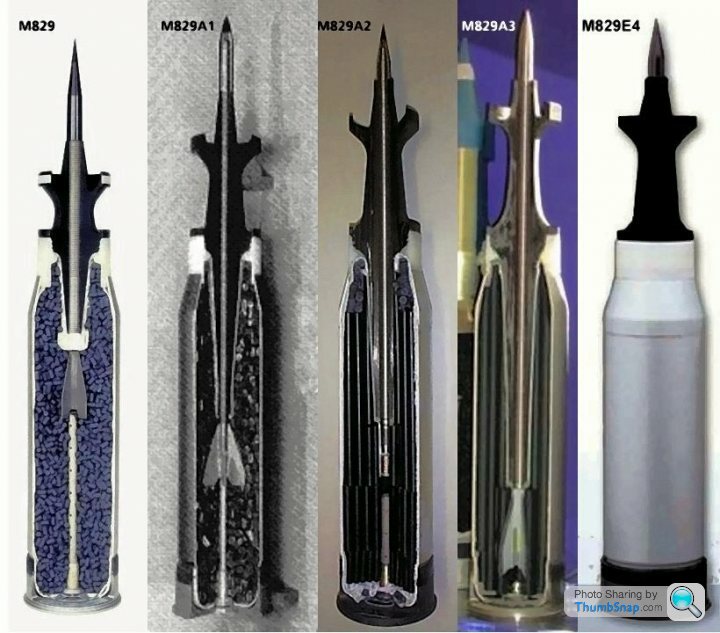What kind of bullet/round/projectile is this?
Discussion
I found this thing in the mid-80s, off the Lulworth coast (firing range) in about 20 metres of water. The pictures show it together with the diving watch I was wearing at the time, together with the ruler for scale.
It's about 18 cm tall, 5 cm diameter and incredibly heavy for its size (over 5kg). There are no letterings or markings on it.
I had it analysed for composition (I worked in a well-equipped lab at the time...) and it turned out to be tungsten with a few % nickel.
I'm assuming it is some kind of armour-piercing round, but I have never been able to find out anything about its background.
Presumably it was used by the British Army given the location I found it. But how old is it? What kind of gun would have fired it? Who manufactured it? Is it rare?
I'd love to find out more!
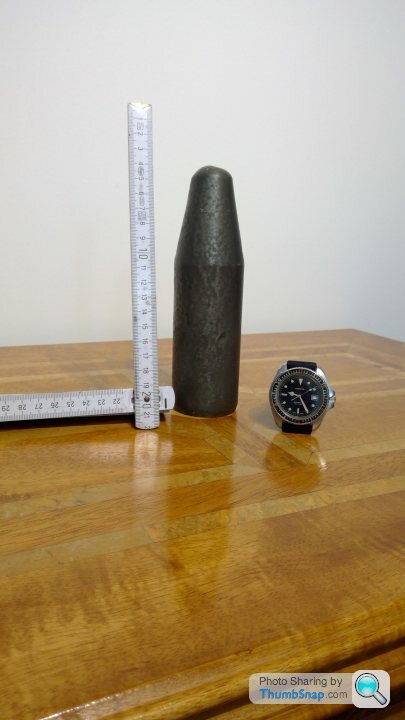
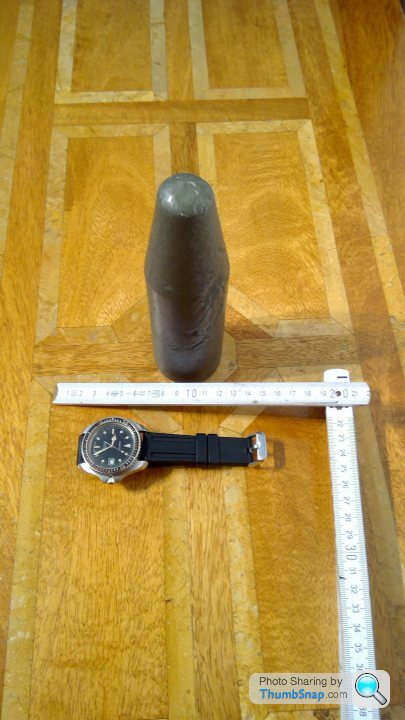
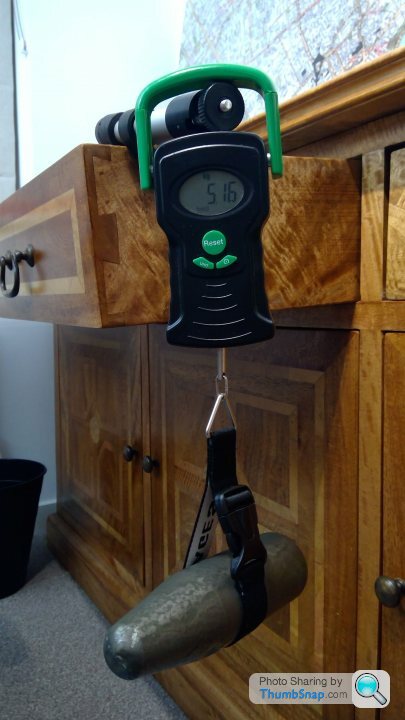
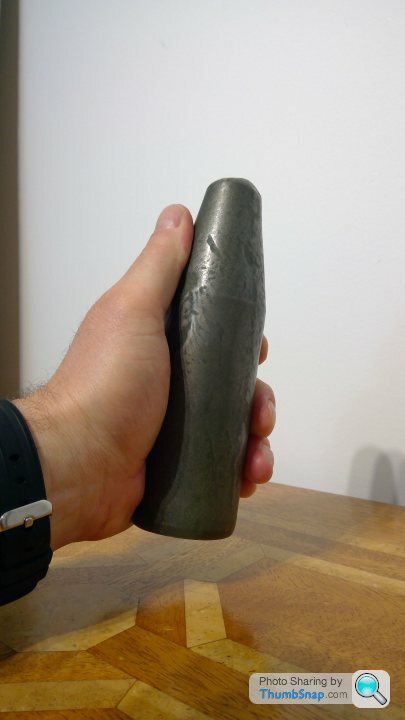
It's about 18 cm tall, 5 cm diameter and incredibly heavy for its size (over 5kg). There are no letterings or markings on it.
I had it analysed for composition (I worked in a well-equipped lab at the time...) and it turned out to be tungsten with a few % nickel.
I'm assuming it is some kind of armour-piercing round, but I have never been able to find out anything about its background.
Presumably it was used by the British Army given the location I found it. But how old is it? What kind of gun would have fired it? Who manufactured it? Is it rare?
I'd love to find out more!




It's the tungsten core from a 120 APDS shot (armour-piercing, detachable sabot).
The principle is that a small, dense shot can carry huge amounts of kinetic energy because it is fired from a very large gun and has a sabot, a large detachable 'sleeve' around it which splits as it leaves the gun barrel.
The tungsten core then pierces the enemy's armour plate and, in doing so, is subject to a huge compressive load; as it pops out of the other side of the armour plate, the load is suddenly released and the tungsten fragments into minute particles travelling at supersonic speeds. It is the most effective mincer/liquidiser known to mankind.
I spent a large chunk of my life making vast quantities of them...
Edit to correct: the 'D' is Discarding, not Detachable. Wine got in the way of the memory cells...
The principle is that a small, dense shot can carry huge amounts of kinetic energy because it is fired from a very large gun and has a sabot, a large detachable 'sleeve' around it which splits as it leaves the gun barrel.
The tungsten core then pierces the enemy's armour plate and, in doing so, is subject to a huge compressive load; as it pops out of the other side of the armour plate, the load is suddenly released and the tungsten fragments into minute particles travelling at supersonic speeds. It is the most effective mincer/liquidiser known to mankind.

I spent a large chunk of my life making vast quantities of them...
Edit to correct: the 'D' is Discarding, not Detachable. Wine got in the way of the memory cells...

Edited by littleredrooster on Thursday 23 April 12:11
littleredrooster said:
It's the tungsten core from a 120 APDS shot (armour-piercing, detachable sabot).
The principle is that a small, dense shot can carry huge amounts of kinetic energy because it is fired from a very large gun and has a sabot, a large detachable 'sleeve' around it which splits as it leaves the gun barrel.
The tungsten core then pierces the enemy's armour plate and, in doing so, is subject to a huge compressive load; as it pops out of the other side of the armour plate, the load is suddenly released and the tungsten fragments into minute particles travelling at supersonic speeds. It is the most effective mincer/liquidiser known to mankind.
I spent a large chunk of my life making vast quantities of them...
When PH delivers...The principle is that a small, dense shot can carry huge amounts of kinetic energy because it is fired from a very large gun and has a sabot, a large detachable 'sleeve' around it which splits as it leaves the gun barrel.
The tungsten core then pierces the enemy's armour plate and, in doing so, is subject to a huge compressive load; as it pops out of the other side of the armour plate, the load is suddenly released and the tungsten fragments into minute particles travelling at supersonic speeds. It is the most effective mincer/liquidiser known to mankind.

I spent a large chunk of my life making vast quantities of them...
vaud said:
littleredrooster said:
It's the tungsten core from a 120 APDS shot (armour-piercing, detachable sabot).
The principle is that a small, dense shot can carry huge amounts of kinetic energy because it is fired from a very large gun and has a sabot, a large detachable 'sleeve' around it which splits as it leaves the gun barrel.
The tungsten core then pierces the enemy's armour plate and, in doing so, is subject to a huge compressive load; as it pops out of the other side of the armour plate, the load is suddenly released and the tungsten fragments into minute particles travelling at supersonic speeds. It is the most effective mincer/liquidiser known to mankind.
I spent a large chunk of my life making vast quantities of them...
When PH delivers...The principle is that a small, dense shot can carry huge amounts of kinetic energy because it is fired from a very large gun and has a sabot, a large detachable 'sleeve' around it which splits as it leaves the gun barrel.
The tungsten core then pierces the enemy's armour plate and, in doing so, is subject to a huge compressive load; as it pops out of the other side of the armour plate, the load is suddenly released and the tungsten fragments into minute particles travelling at supersonic speeds. It is the most effective mincer/liquidiser known to mankind.

I spent a large chunk of my life making vast quantities of them...
littleredrooster said:
It's the tungsten core from a 120 APDS shot (armour-piercing, detachable sabot).
The principle is that a small, dense shot can carry huge amounts of kinetic energy because it is fired from a very large gun and has a sabot, a large detachable 'sleeve' around it which splits as it leaves the gun barrel.
The tungsten core then pierces the enemy's armour plate and, in doing so, is subject to a huge compressive load; as it pops out of the other side of the armour plate, the load is suddenly released and the tungsten fragments into minute particles travelling at supersonic speeds. It is the most effective mincer/liquidiser known to mankind.
I spent a large chunk of my life making vast quantities of them...
Horribly fascinating. Is this an example of 'hesh'?The principle is that a small, dense shot can carry huge amounts of kinetic energy because it is fired from a very large gun and has a sabot, a large detachable 'sleeve' around it which splits as it leaves the gun barrel.
The tungsten core then pierces the enemy's armour plate and, in doing so, is subject to a huge compressive load; as it pops out of the other side of the armour plate, the load is suddenly released and the tungsten fragments into minute particles travelling at supersonic speeds. It is the most effective mincer/liquidiser known to mankind.

I spent a large chunk of my life making vast quantities of them...
Taylor James said:
Horribly fascinating. Is this an example of 'hesh'?
No, they're two different rounds.Checkmate said:
I always had a picture in my head that the AP projectile from the DS part would be more "sharp"
Normally they are sharper on the tip and have an appearance more akin to a dart.Edited by Mastodon2 on Thursday 23 April 00:12
Mastodon2 said:
Taylor James said:
Horribly fascinating. Is this an example of 'hesh'?
No, they're two different rounds.Checkmate said:
I always had a picture in my head that the AP projectile from the DS part would be more "sharp"
Normally they are sharper on the tip and have an appearance more akin to a dart.Edited by Mastodon2 on Thursday 23 April 00:12
My thinking of HESH is like shooting a load of explosive Play-Do on the front of something, then it goes bang, and compression damage, along with the explosion damage. Is that correct?
ETA for the APDS I thought it did look like a dart, a longer projectile, with a stabilising fin on the end. But then there are lots of rounds, it gets confusing!
Edited by Checkmate on Thursday 23 April 00:26
Checkmate said:
ETA for the APDS I thought it did look like a dart, a longer projectile, with a stabilising fin on the end. But then there are lots of rounds, it gets confusing!
They do... but the sharp pointy bit is effectively an aero shield, this is the core, that sits under that and does the penetrating.Edited by Checkmate on Thursday 23 April 00:26
Pic makes it easier to visualise...
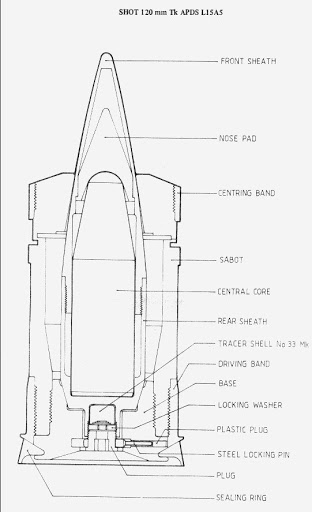
nikaiyo2 said:
Checkmate said:
ETA for the APDS I thought it did look like a dart, a longer projectile, with a stabilising fin on the end. But then there are lots of rounds, it gets confusing!
They do... but the sharp pointy bit is effectively an aero shield, this is the core, that sits under that and does the penetrating.Edited by Checkmate on Thursday 23 April 00:26
Pic makes it easier to visualise...

How about when you see those shots from American guns where the projectile looks like a dart you would throw at the pub? Ahh I just looked, is that APFSDS I'm thinking of?
Checkmate said:
nikaiyo2 said:
Checkmate said:
ETA for the APDS I thought it did look like a dart, a longer projectile, with a stabilising fin on the end. But then there are lots of rounds, it gets confusing!
They do... but the sharp pointy bit is effectively an aero shield, this is the core, that sits under that and does the penetrating.Edited by Checkmate on Thursday 23 April 00:26
Pic makes it easier to visualise...

How about when you see those shots from American guns where the projectile looks like a dart you would throw at the pub? Ahh I just looked, is that APFSDS I'm thinking of?
APDS (Armour Piercing Discarding Sabot) is an older type of ammunition, Britain first introduced it for the 17pdr (76.2mm) gun back in 1944 (it was very inaccurate when first introduced). Muzzle velocities in the order of 1200m/s. Tungsten penetrator.
APFSDS is the modern version and has a much longer, narrower penetrator. No ballistic cap required. Muzzle velocities in the order of 1600m/s or even higher. Tungsten or DU penetrator, Tungsten is denser but DU gives an exothermic reaction upon impact.
APFSDS is the modern version and has a much longer, narrower penetrator. No ballistic cap required. Muzzle velocities in the order of 1600m/s or even higher. Tungsten or DU penetrator, Tungsten is denser but DU gives an exothermic reaction upon impact.
wisbech said:
Presumably if the penetrator is too sharp/ pointy it increases the chance of ricochet. So the bluntish end?
In a way, yes. Back in the day, AP ammunition had ballistic caps because the harder penetrator was blunt, this blunt shape greatly reduced the risk of the penetrator shattering on impact with face-hardened armour.Checkmate said:
That's what I was thinking Mastodon.
My thinking of HESH is like shooting a load of explosive Play-Do on the front of something, then it goes bang, and compression damage, along with the explosion damage. Is that correct?
It would depend on the target, against a lightly armoured vehicle it almost certainly split the vehicle open and deal pure blasting damage from the explosive element. Against heavily-armoured vehicles, the intended effect is that the head squashes flat like a pancake efore detonating. The transfer of energy to the inner wall of the armour plating would cause spalling (fragments of mental) to be generated and protected around the crew compartment. The idea was not necessarily to penetrate the armour but to produce a force such that the damage to crew and equipment inside the vehicle would render it inoperable.My thinking of HESH is like shooting a load of explosive Play-Do on the front of something, then it goes bang, and compression damage, along with the explosion damage. Is that correct?
Edited by Checkmate on Thursday 23 April 00:26
The British, Americans and Germans all developed their own HESH-esque rounds and there are probably more nations that I'm not aware of. It's part of the armourand ammunition race of the later WWII and beyond period, where design philosophy for armoured vehicles began to shift as the existing ammunition types such as HEAT had developed to such a point that it didn't look like any type of armour would stand up to them. Hence the Leopard 1, which was considerably less armoured than the tanks that saw out the immediate post-war period.
Gassing Station | The Lounge | Top of Page | What's New | My Stuff




